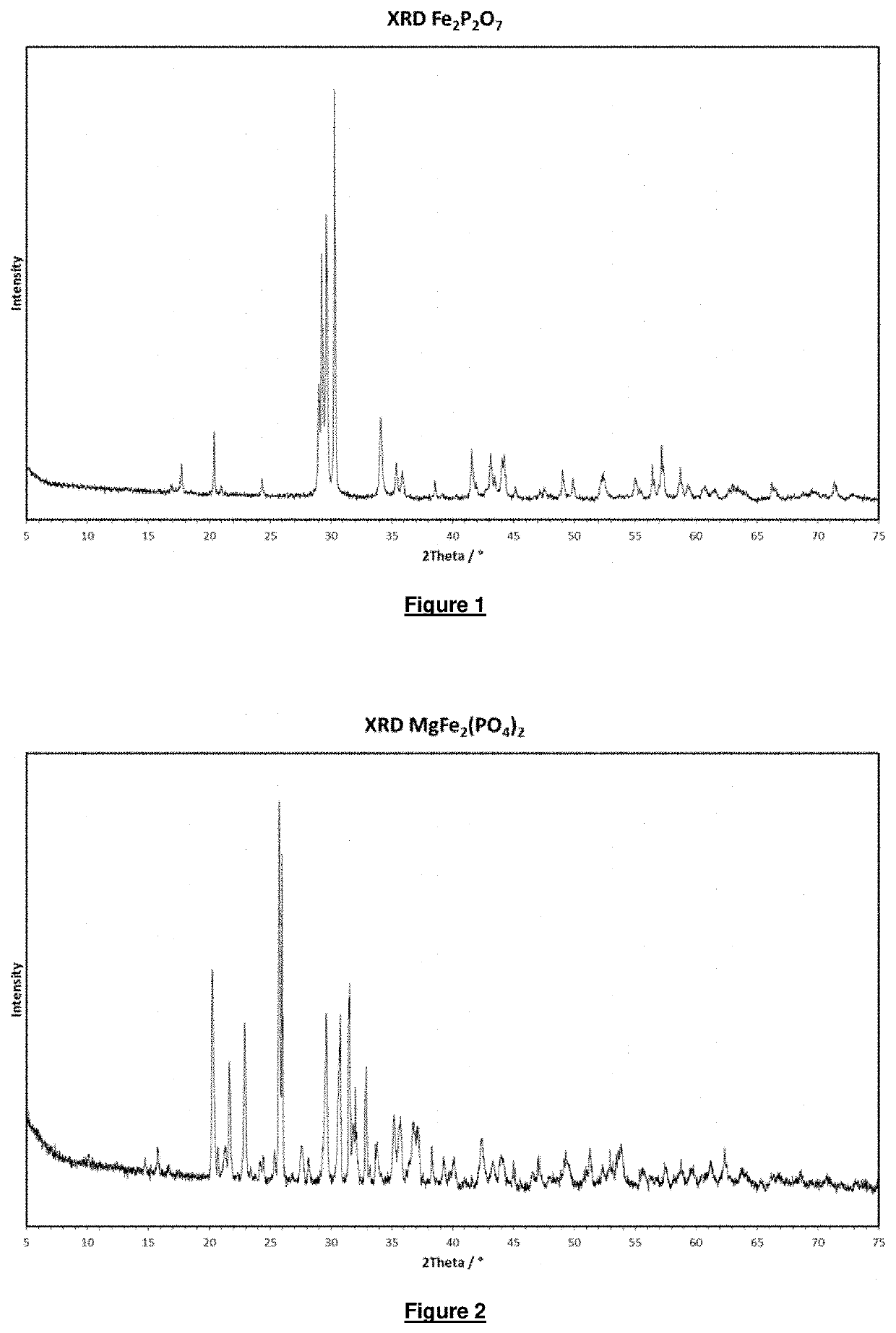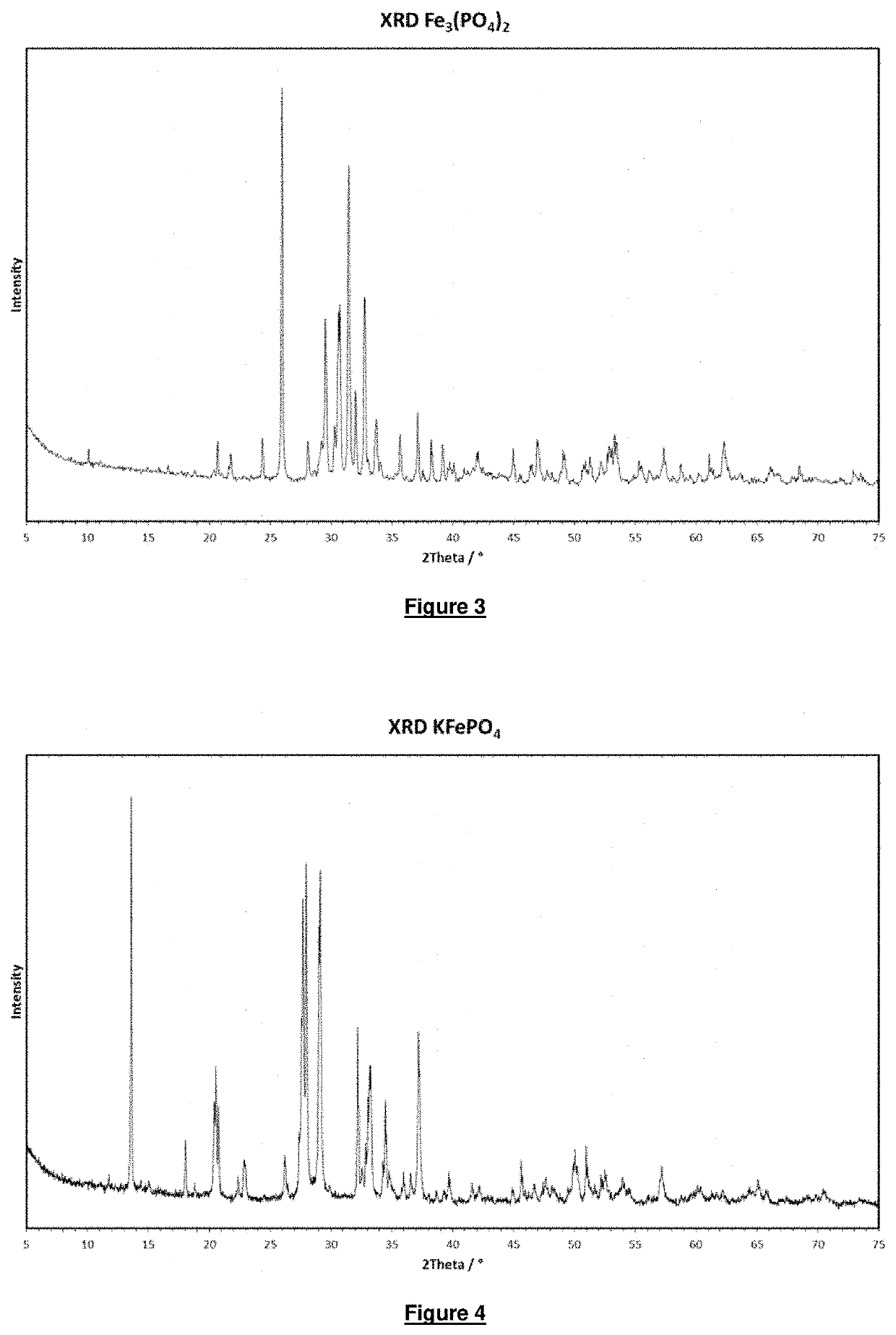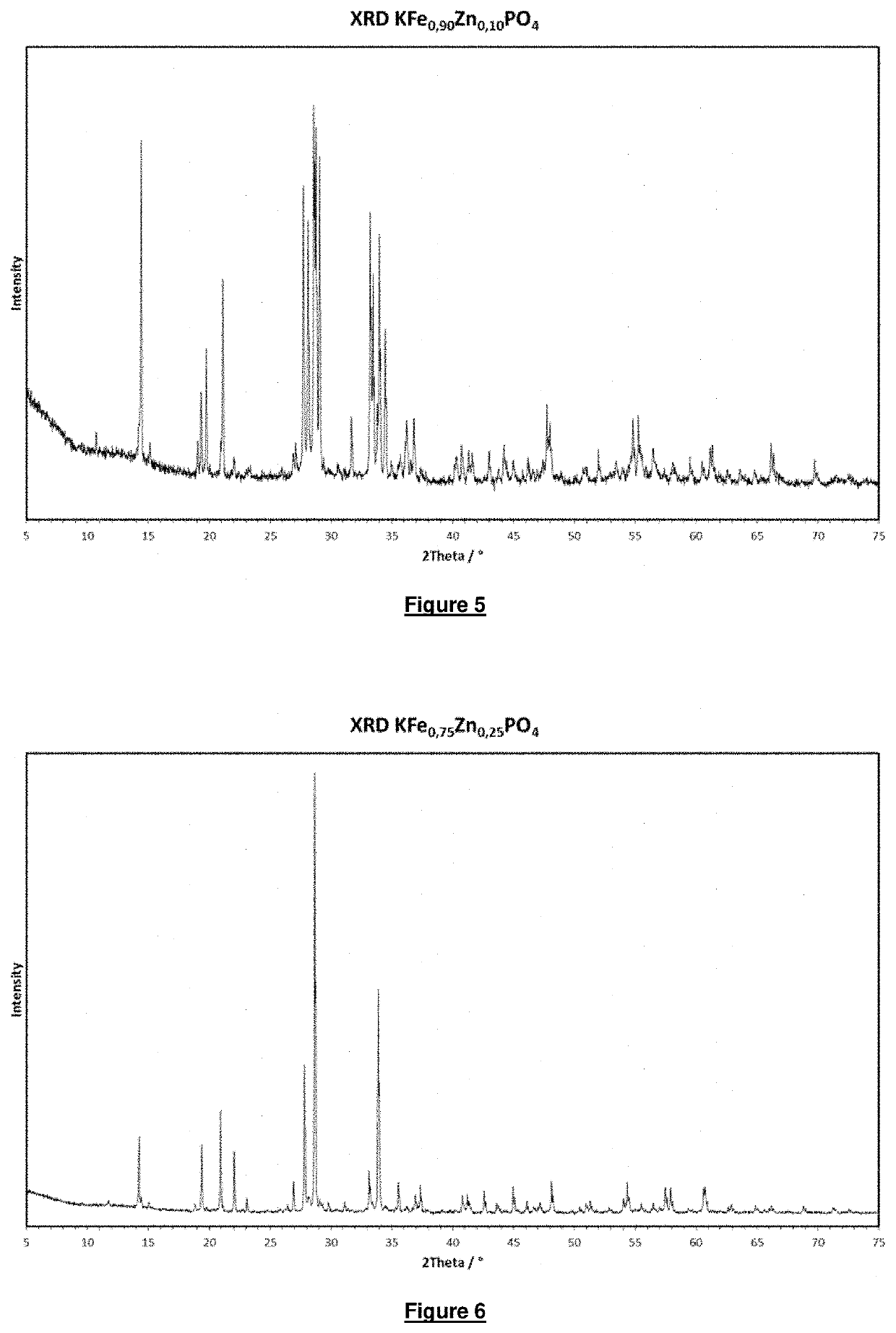USE OF CRYSTAL WATER-FREE Fe(II) COMPOUNDS AS RADIATION ABSORBERS
a radiation absorber and crystal water-free technology, applied in the field of crystal water-free fe (ii) compounds as radiation absorbers, can solve the problems of low thermal stability of organic compounds, difficult access and complex production, and large complexity of organic nir absorbers
- Summary
- Abstract
- Description
- Claims
- Application Information
AI Technical Summary
Benefits of technology
Problems solved by technology
Method used
Image
Examples
manufacturing example 1
Crystal Water-Free Fe2P2O7
[0073]A suspension of
[0074]i) 35.5 kg iron(III) oxide-hydroxide [FeO(OH) or Fe2O3 1H2O],
[0075]ii) 16.5 kg 98% phosphonic acid [H3PO3],
[0076]iii) 26.5 kg 75% phosphoric acid [H3PO4] and
[0077]LA: 220 kg water
[0078]was spray granulated. The granulate obtained in this way was temperature treated in a rotary kiln for an average residence time of 4 h in a form gas atmosphere (5% by volume H2 in N2) at 700° C. An almost colourless to slightly pink product is obtained. The x-ray diffractogram (XRD) of the product is shown in FIG. 1. The product was identified using PDF card 01-072-1516.
manufacturing example 2
Phase Mixture of Crystal Water-Free Mg1.5Fe1.5(PO4)2 and Fe3(PO4)2
[0079]A suspension of
[0080]i) 8.45 kg iron(III) oxide-hydroxide [FeO(OH) or Fe2O3 1H2O],
[0081]ii) 7.95 kg 98% phosphonic acid [H3PO3],
[0082]iii) 19.6 kg iron(III) phosphate dihydrate [FePO4 2H2O],
[0083]iv) 8.43 kg magnesium carbonate [MgCO3] and
[0084]LA: 160 kg water
[0085]was spray granulated. The granulate obtained in this way was temperature treated in a rotary kiln for an average residence time of 3 h in a form gas atmosphere (5% by volume H2 in N2) at 750° C.
[0086]An almost colourless product is obtained. The x-ray diffractogram (XRD) of the product is shown in FIG. 2. The product was identified using the PDF cards as a phase mixture of a main phase Mg1.5Fe1.5(PO4)2 (PDF card 01-071-6793) and a subsidiary phase Fe3(PO4)2 (PDF card 00-49-1087).
manufacturing example 3
Crystal Water-Free Fe3(PO4)2
[0087]A suspension of
[0088]i) 21.75 kg iron(III) oxide-hydroxide [FeO(OH) or Fe2O3 1H2O],
[0089]ii) 12.15 kg 98% phosphonic acid [H3PO3],
[0090]iii) 10.3 kg iron(III) phosphate dihydrate [FePO4 2H2O] and
[0091]LA: 140 kg water
[0092]was spray granulated. The granulate obtained in this way was temperature treated in a rotary kiln for an average residence time of 90 minutes in a form gas atmosphere (5% by volume H2 in N2) at 750° C. An almost colourless product is obtained. The x-ray diffractogram (XRD) of the product is shown in FIG. 3. The product crystallises in the graftonite structure and was identified using PDF card 00-49-1087. The product was ground such that 50% by weight of the product had a particle size of less than 3 μm.
PUM
| Property | Measurement | Unit |
|---|---|---|
| particle size | aaaaa | aaaaa |
| particle size | aaaaa | aaaaa |
| wavelength | aaaaa | aaaaa |
Abstract
Description
Claims
Application Information
 Login to View More
Login to View More - R&D
- Intellectual Property
- Life Sciences
- Materials
- Tech Scout
- Unparalleled Data Quality
- Higher Quality Content
- 60% Fewer Hallucinations
Browse by: Latest US Patents, China's latest patents, Technical Efficacy Thesaurus, Application Domain, Technology Topic, Popular Technical Reports.
© 2025 PatSnap. All rights reserved.Legal|Privacy policy|Modern Slavery Act Transparency Statement|Sitemap|About US| Contact US: help@patsnap.com



